PV equipment, safety standards, and electrical codes are not developed in a vacuum. How are PV equipment, PV standards, and PV codes related and how are they developed? Yes, there is a little “chicken or egg” in the process since the development of all three is an interactive process.
Equipment Development
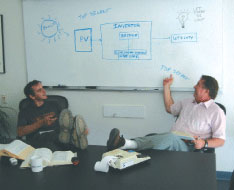
Although the prototype works well in the laboratory (photo 2), the manufacturer must refer to numerous standards (photo 3) as the electronic layout and mechanical packaging are developed for the final product.
The designers and developers will spend many hours reading and applying Underwriters Laboratories (UL) Standard 1741 dealing with PV inverters. This UL standard for safety establishes requirements for the construction and testing of the inverter to ensure that it will pose no overt safety hazards when properly installed and operated.
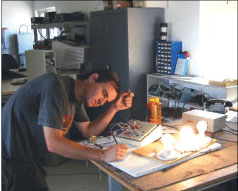
Photo 2. It Works!
The two primary standards related to PV equipment are UL 1703 for PV modules and UL 1741 for PV inverters and charge controllers. UL 1741 is not an all-inclusive standard, but like most other UL standards, it references numerous other standards that establish requirements for the various components and materials used in the inverter.
UL conducts the safety tests on the inverter outlined by the standard; and if those tests are passed, it lists the inverter as meeting the requirements of the standard. A product that meets the appropriate UL standards, and is installed in an electrical system following the requirements of the National Electrical Code will generally be free from hazards.
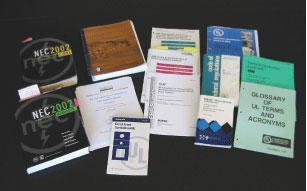
Photo 3. What are these?
Canadian Standards Association (CSA) and Intertek SEMKO (ETL) also perform safety tests of PV electrical products using UL standards and certify or list that the products have met the requirements of the standard.
As one of the codes and standards focal points for the PV industry, the author and other engineers at the Southwest Technology Development Institute/Institute for Energy and the Environment assist PV module and inverter manufacturers in understanding the PV requirements of some UL standards and the NEC (photo 4). Because these manufacturers rarely are deeply involved in the trials and tribulations of installing their equipment in tight spaces with limited tools, some of the equipment that is designed has unusual shapes and is not installer friendly. For those cases, SWTDI maintains a “special” training program that shows these equipment designers that large rectangular boxes with large open areas and standard terminals accessible from the front (just like standard load centers) are the preferred design (photo 5).
How Is the Standard Developed?
http://ulstandardsinfonet.ul.com/development.pdf

UL maintains standards technical panels (STP) for the two PV standards (1741 and 1703). These panels are composed of a balanced membership of volunteers invited from the industry (in the 1741 case, the PV equipment manufacturers), users, inspectors, government laboratories, and others. Other nationally recognized testing laboratories like CSA and ETL are also invited to be on the STP. The standards technical panel meets periodically to review the standard, to review technological advances that will impact the products, and to review feedback and comments from users, inspectors, and the public concerning products that have been listed under the standard. The STP drafts necessary changes to the standard. After a formatting and editing review, UL circulates these proposed changes to a wider audience including inverter manufacturers, users, regulatory agencies, and others for comment. After an extensive review and coordination process, the standard is revised and finally published. The changes usually have a phase-in date that gives the manufacturers time to revise any existing products. The balanced membership on the STP and the wide dissemination of the proposed changes ensures that the standard reflects the needs and desires of all stakeholders consistent with the basic nature of a safety standard. The author is a member of both the UL 1703 and UL 1741 Standards Technical Panels.
The Code?
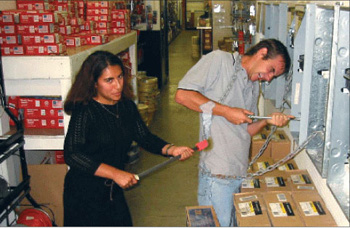
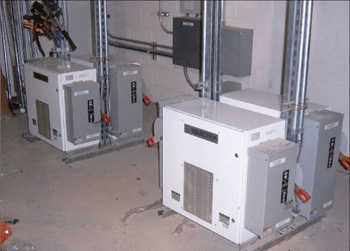
Photo 6. Good equipment, the result of a complex process
NFPA Code-Making Panel 13 that also has a balanced membership evaluates proposals submitted for Code changes relating to PV systems found in Article 690. In addition to Article 690, CMP-13 deals with nine other articles in the Code and is very busy during the several code meetings. There are 16 members on CMP-13 plus an equal number of alternates, who also sometimes attend and participate. They represent the following: IAEI, Solar Energy Industries Association (SEIA)—Ward Bower from Sandia National Laboratories is the representative, Alliance for Telecommunications Industry Solutions, Institute of Electrical and Electronics Engineers, Associated Builders and Contractors, Independent Electrical Contractors, Inc., Electric Light and Power Group, UL, US Fuel Cell Council, National Electrical Manufacturers Association, Intertek Testing Services (ETL), IBEW, American Society of Agricultural Engineers, and Electrical Generating Systems Association.
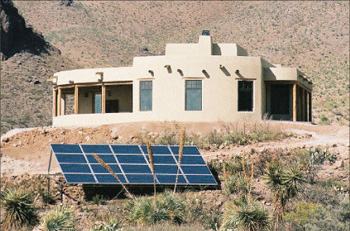
Photo 7. Safe, reliable, durable
CMP-13, like all other CMPs, meets shortly after the proposals have been received by NFPA. Each proposal is carefully reviewed and a Report on Proposals is issued by NFPA showing the panel actions on each proposal. The panel may elect to accept the proposal as submitted, accept-in-principle-with-changes, or reject it. The Report on Proposals is available to the general public for comment. After those comments have been submitted, CMP-13 again meets to review and act on the comments. NFPA also has a Technical Correlating Committee that oversees the entire process and coordinates between various CMPs to ensure a degree of continuity throughout the Code.
PV Industry Forum
The PV Industry Forum is a group of more that 100 individuals in and out of the PV industry that develop, review, coordinate, and substantiate proposals for the NEC that involve PV systems. In addition to members of the PV industry, the Forum includes IBEW members, electrical inspectors, utilities, and even people at NFPA headquarters. For the most part, proposals deal with Article 690, but since other areas in the Code affect PV systems, proposals for other articles are sometimes submitted. For example, a proposal was submitted to revise the wording in Section 250.166 (Size of DC Grounding Electrode Conductors) for NEC-2008.
Ward Bower from Sandia National Laboratories is the chair of the PV Industry Forum and the author is the secretary of the Forum. John makes presentations around the country on a regular basis and talks with inspectors, electricians, and PV designer installers every day. He collects suggestions for Code clarifications and changes throughout the year. Early in the year that new proposals are to be submitted to NFPA, he uses the NFPA Style Manual to convert these code suggestions into draft proposals with technical substantiation. Ward Bower circulates these draft proposals throughout the PV Industry Forum and the feedback results in a finely tuned set of proposals and even some new ideas that are coordinated even further. In November, John submits the reviewed and coordinated proposals to NFPA. As the code-making panel actions become known, John and Ward distribute this information to the PV Industry Forum and solicit feedback. The comments are folded back into the process to help the PV Industry get a clear, concise set of PV requirements in Article 690 of the next edition of the National Electrical Code.
An Interactive Process
Equipment concepts lead to product development based on standards. The codes provide guidance on how the equipment is to be installed. PV equipment designers, PV installers, electrical inspectors, PV users, and others provide feedback to the codes and standards developers and the process continues without end. Through the hard work of thousands, the result is safer, reliable, and more durable PV systems being installed in ever-increasing numbers (photo 6 and 7).
For Additional Information
If this article has raised questions, do not hesitate to contact the author by phone or e-mail. E-mail: jwiles@nmsu.edu Phone: 505-646-6105
A color copy of the 150-page, 2005 edition of the Photovoltaic Power Systems and the National Electrical Code: Suggested Practices, published by Sandia National Laboratories and written by the author, may be downloaded from this web site: http://www.nmsu.edu/~tdi/Photovoltaics/Codes-Stds/PVnec-SugPract.htm
The Southwest Technology Development Institute web site maintains a PV Systems Inspector/Installer Checklist and all copies of the previous “Perspectives on PV” articles for easy downloading. Copies of “Code Corner” written by the author and published in Home Power Magazine over the last 10 years are also available on this web site: http://www.nmsu.edu/~tdi/Photovoltaics/Codes-Stds/Codes-Stds.htm
The author makes 6–8 hour presentations on “PV Systems and the NEC ” to groups of 40 or more inspectors, electricians, electrical contractors, and PV professionals for a very nominal cost on an as-requested basis. A schedule of future presentations can be found on the SWTDI web site.













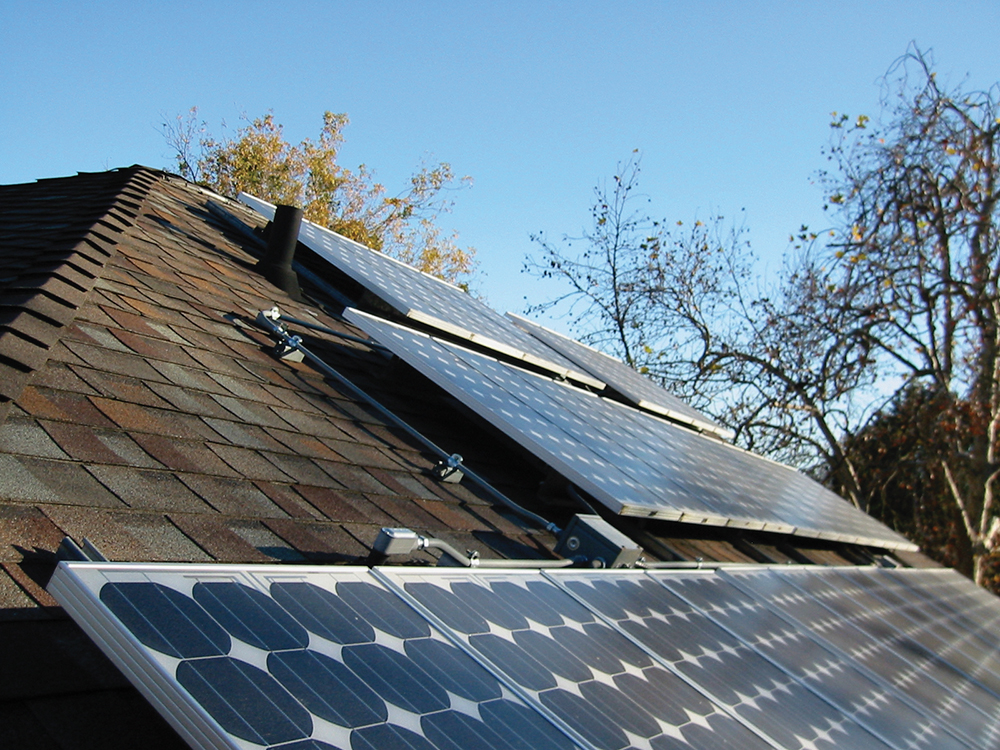
Find Us on Socials